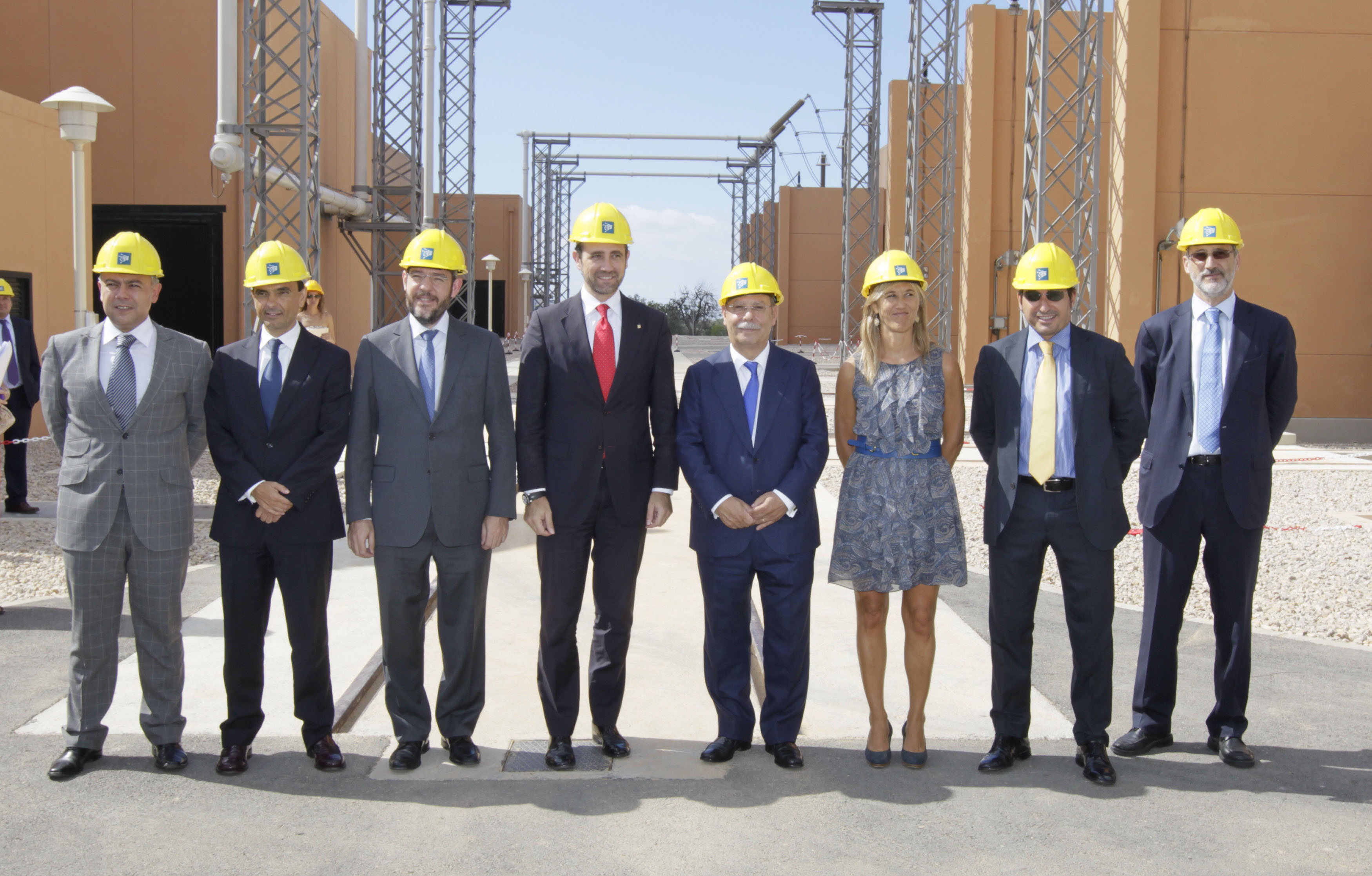For 40 years, we've been driving our country's economic and social progress. Four decades shaping Spain.
The Santa Ponsa converter station inaugurated
José Ramón Bauzá, President of the Balearic Islands' Government, Alberto Nadal, Secretary of State for Energy, and José Folgado, Chairman of Red Eléctrica, have today inaugurated the Santa Ponsa converter station, an essential infrastructure for the submarine electricity interconnection between the Spanish peninsula and Balearic Islands (Rómulo project). The opening ceremony was attended by the delegate of Government in the Balearic Islands, Teresa Palmer, the Regional Government Councillor for Economy and Competitiveness, Joaquín García, and the Mayor of Calviá, Manuel Onieva.
The Santa Ponsa converter station, a pioneering facility in Spain and one of the few that exist in Europe, allows the direct current carried by the electricity link to be transformed into alternating current, which is the current that flows in the insular and peninsular electricity system, and vice versa.
Both the 220-kilovolt (kV) station and the rest of the interconnection facilities went into service in August 2012, following the approval of the ministerial resolution that integrates the peninsular and insular electricity systems. Beforehand, as of November 2011, the necessary testing of the link was carried out.
During the ceremony the Chairman of Red Eléctrica, José Folgado, highlighted the high technological component of this infrastructure, which ensures the security and quality of supply, and also provides significant cost savings for the system as a whole, as well as significant environmental benefits.
Evaluation of the submarine electricity interconnection
After having been in operation for a year, the electricity interconnection has already represented significant economic and environmental savings for the Balearic Islands? system. Because the Peninsular system has a more diverse and economical electricity generation, the supply of energy from the interconnection represents an average daily saving for the insular system in the order of 16%, meaning a total annual savings of 50 million euros.
From an environmental point of view, the results of the first year of operation of the link have also been very positive, as there was a reduction of CO2 emissions from electricity generation of 285,000 tonnes.
The average contribution of the link has been almost 30% of the total consumption of the insular system, reaching 40% at certain times. Therefore, the interconnection is a guarantee for the quality and security of electricity supply in the islands, highlighting the essential role played in 2012 and 2013, in avoiding power outages after incidents recorded in the system due to weather conditions.
Investment of 420 million euros
The investment made by Red Eléctrica in the Rómulo project is 420 million euros, which includes 50 million euros for the construction of the Santa Ponsa converter station.
The Santa Ponsa converter station, a pioneering infrastructure
The Santa Ponsa converter station is, along with that of Morvedre (Sagunto) at the other end of the cable, the first of its kind to be built in Spain. The innovative nature of both facilities responds to the uniqueness of the Rómulo project. This is a high voltage submarine interconnection, ± 250 kV, enabled by a 400 MW bipolar link, which uses direct current technology (HVDC), given the distances and the power necessary for this link. The approximate length of the submarine cable is 237 km and runs at a maximum depth of 1,485 metres.
This project responds to Red Eléctrica's continuous commitment to achieving a more sustainable, diversified and profitable electricity system, which also allows a greater amount of renewable energy to be integrated with the resulting reduction of CO2 emissions.













